Collections & Exhibits
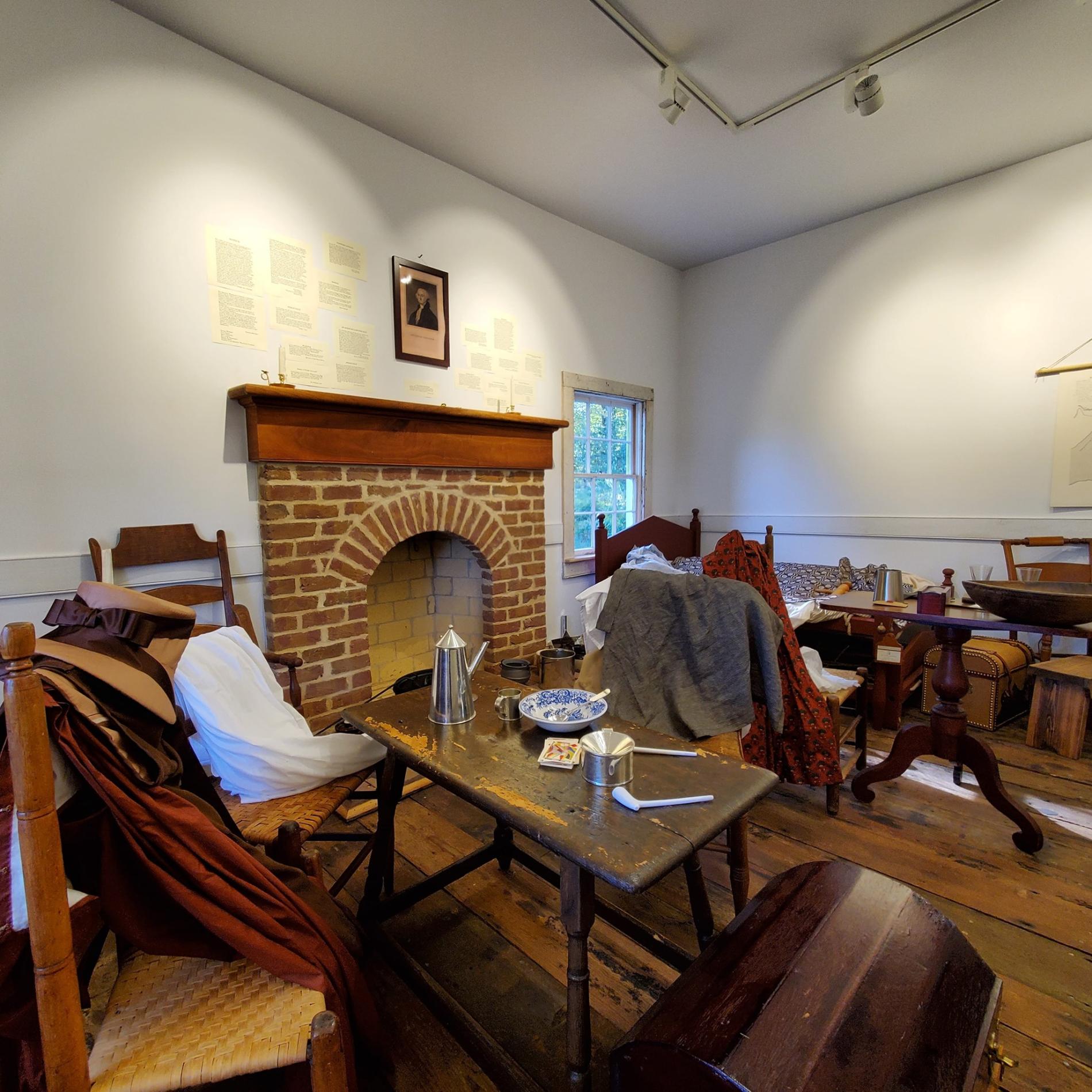
The Office of Historic Preservation of the Department of Parks & Recreation is the proud caretaker for our community's treasured artifacts and historic materials. Staff collects, preserves, exhibits, and interprets these items on behalf of Prince William County. Our efforts support the County's goals to preserve our rich historic resources.
Stewardship of artifacts and historic materials is a crucial element of our historic preservation efforts. It entails great trust in staff to properly catalog, identify, preserve, and display these items. These items help a community understand its cultural past by viewing the items valued by the citizens that came before us. Artifacts and materials give us a glimpse of their daily lives by seeing the things they used. All of our historic house museums have furnishing and interpretive plans that help us determine what types of artifacts to collect and how they will be interpreted. These plans can be reviewed at any of our open historic sites or you can see a couple of examples from Brentsville Courthouse Historic Centre for the Haislip Hall House, Brentsville Courthouse, Union Church and Brentsville Schoolhouse.
To ensure the greatest care and maintenance of these items, staff follow the guidelines and procedures created by the American Association of Museums. The County's preservationist is responsible for the daily care and security of the Prince William County Historic Artifact and Archaeological Collections. In addition, the preservationist oversees exhibits storage transportation and conservation of these precious items. The preservationist will plan for future needs and growth as our property and programs expand. Our goal is to furnish our historic sites with artifacts and materials to help illustrate the stories and importance of each property. Through displays, educational talks and interpretation, our citizens will have a greater appreciation and understanding of our community's important role in the development of our nation.
You can view our Collections Management Policy here, or you can review a copy at any of our historic sites or the main office at 17674 Main Street in Dumfries. You may also learn more by calling our staff at 703-792-4754.
Traveling Exhibits
The Prince William County Office of Historic Preservation has numerous traveling exhibits covering local history topics. Exhibits are available to reserve for display or classroom use. For more information about reserving these exhibits, please fill out this online form or reach out to [email protected]. A downloadable form is also available here.
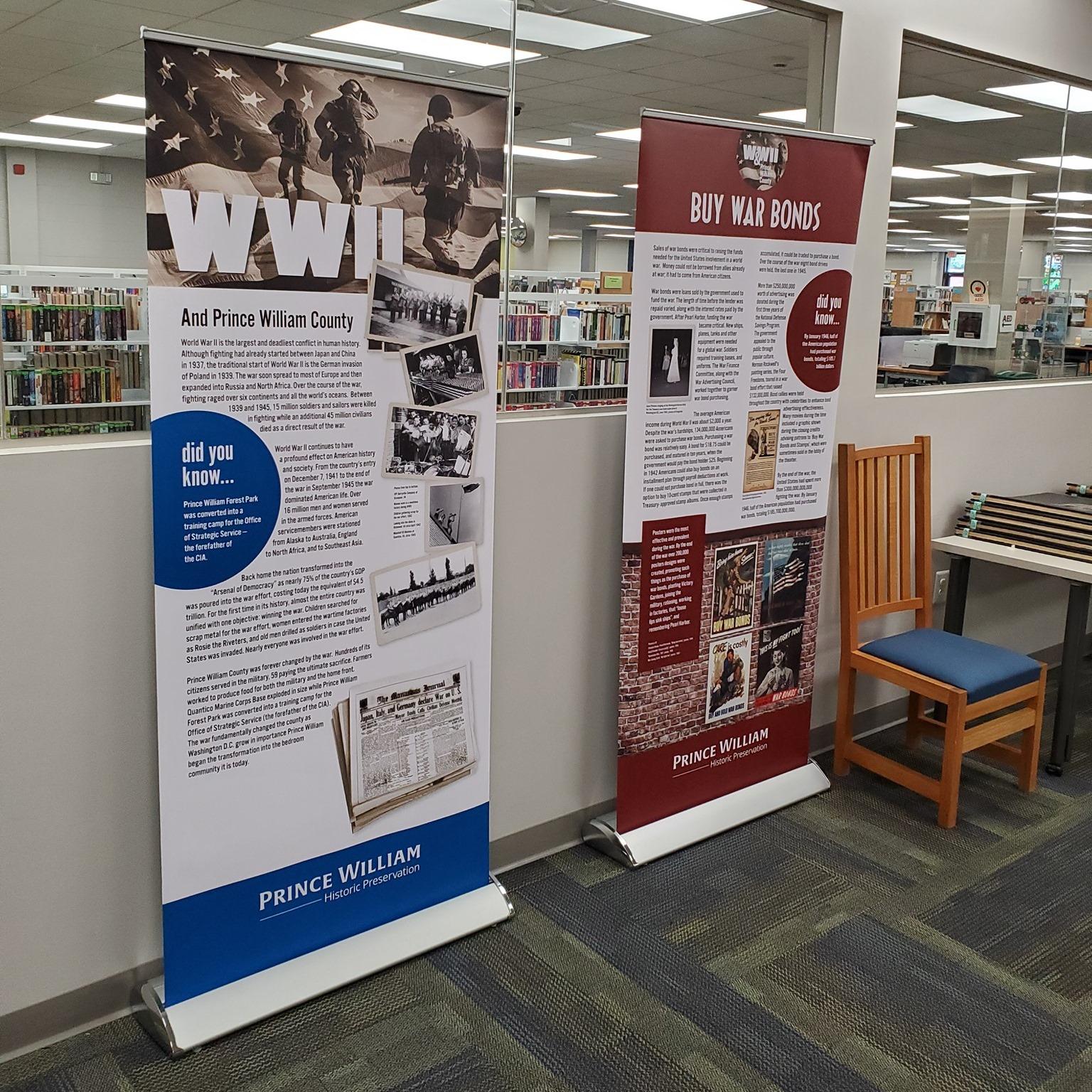
World War II and Prince William County
Prince William County was forever changed by WWII. Hundreds of its citizens served in the military, 59 paying the ultimate sacrifice. Farmers worked to produce food for both the military and the home front. Quantico Marine Corps Base exploded in size while Prince William Forest Park was converted into a training camp for the Office of Strategic Service (the forefather of the CIA). The war fundamentally changed the county as Washington D.C. grew in importance Prince William began the transformation into the bedroom community it is today.
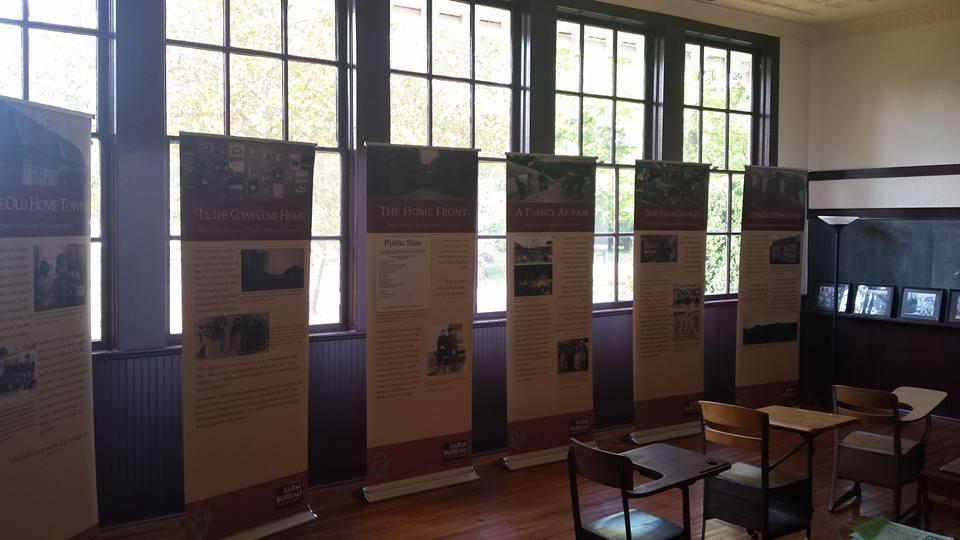
The Way it Was: 20th Century Agriculture in Prince William County
This exhibit is part of a project by the Prince William County Historical Commission to document and preserve the county’s agricultural history. The project began with a collection of oral histories in summer 2014. The themes for this exhibit were gathered from the information presented in the oral histories, and many of the panel quotes come from those interviews. Although many categorize Prince William County as an urban environment, it’s important to take a closer look at both the past and present. Its towns may be connected by superhighways and expansive strip malls, but the county’s roots remain in the rich rural lands.
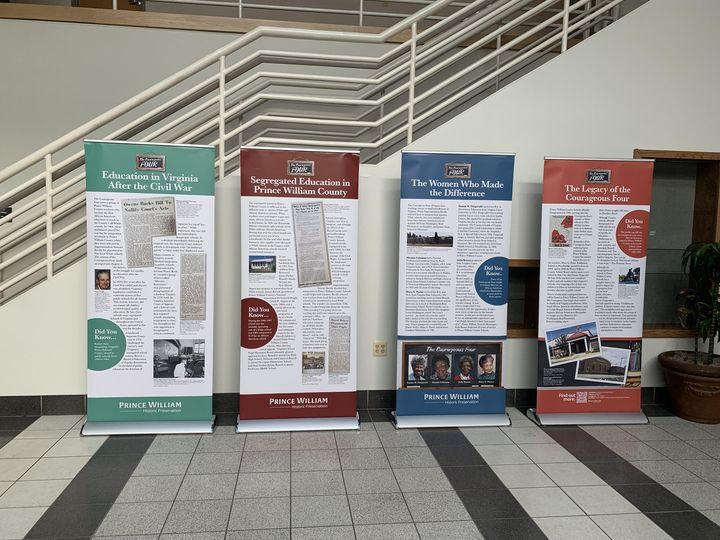
The Courageous Four
The Courageous Four were a group of Prince William County teachers who became the first African American educators to teach in the County’s all-White schools. In 1964, these trailblazers paved the way for the integration of schools in Prince William County when they were selected by Superintendent Stewart Beville for placement in four local White schools. Public education and segregated schools have a complicated past in Virginia, and the actions of the Courageous Four mark an important chapter in the history of the struggle for equality in education after the Civil War.
The Courageous Four traveling exhibit is accompanied by an online exhibit which features additional images of the teachers as well as recorded presentations about the Courageous Four. Click here to view the accompanying Courageous Four Online Exhibit.
Historic Thoroughfare
The community of Thoroughfare was established after the Civil War primarily by free born and formerly enslaved African Americans. This exhibit explores the history of Thoroughfare through the people, places, and stories that contribute to its identity today. The Historic Thoroughfare traveling exhibit is also accompanied by an online exhibit about the community.
Research Collections
Prince William County in the American Revolution
The goal of this research project was to create a comprehensive roster of Prince William County Revolutionary War veterans who either were born or enlisted in the County. The resources included in the project are a roster, index, annotated bibliography, and a GIS map showing the burial locations of many of these veterans. The resources generated from this project are updated as new entries and information are found. You can view and download these items on the Prince William County in the American Revolution page.
An Annotated Bibliography of Native Americans in Prince William County (2022)
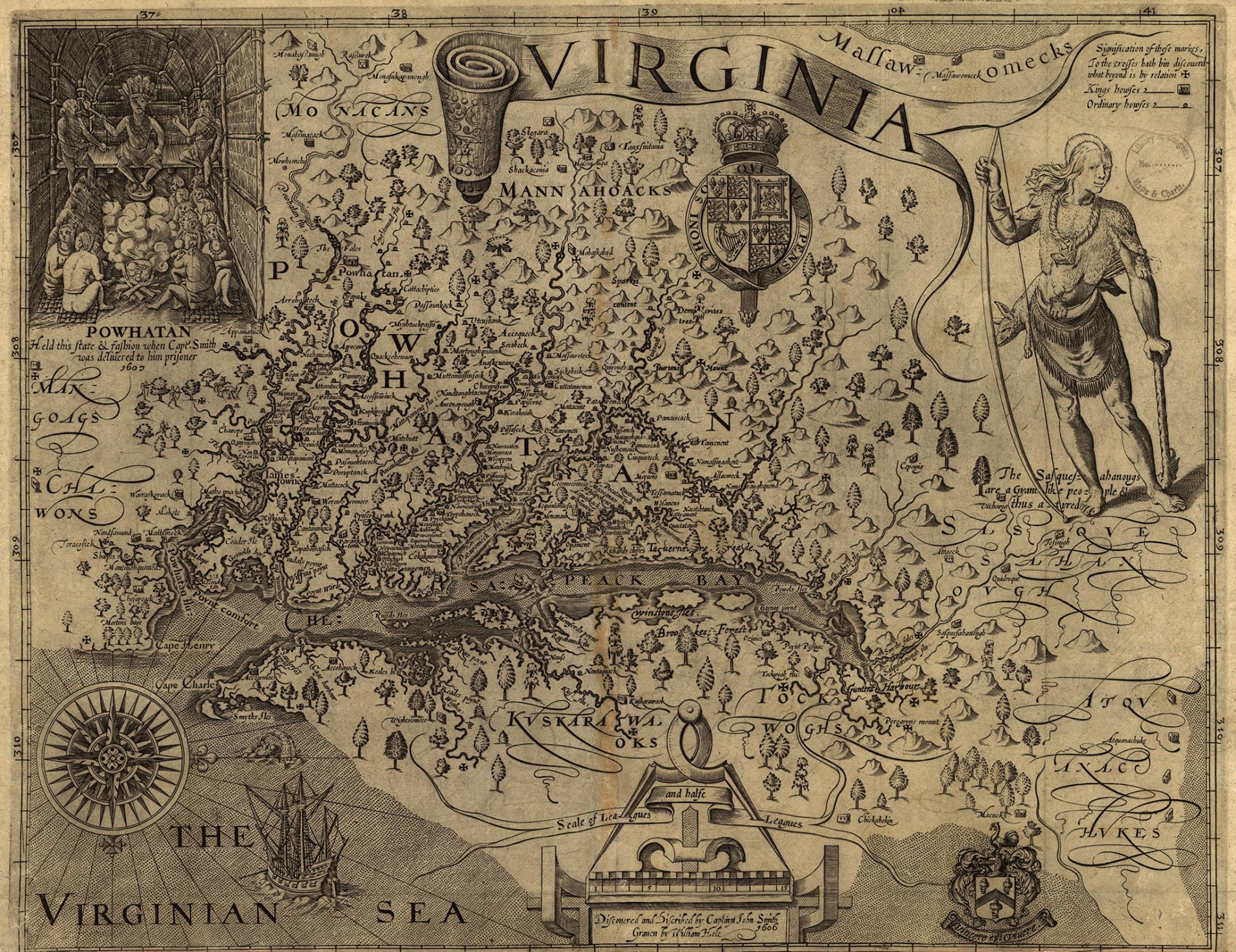
The aim of this project was to consolidate and contextualize sources on post-contact Native American history in Prince William County into an easily accessible document that serves as the basis for future research and community engagement with this topic. Each source was then reviewed and summarized in an annotated bibliography format to elucidate its specific subject matter, time period, and geographic focus. While this annotated bibliography is source-centric, the historical information gleaned from these sources appears in an article published in the Journal of Prince William County History.
LEFT: John Smith's 1612 map of Virginia.